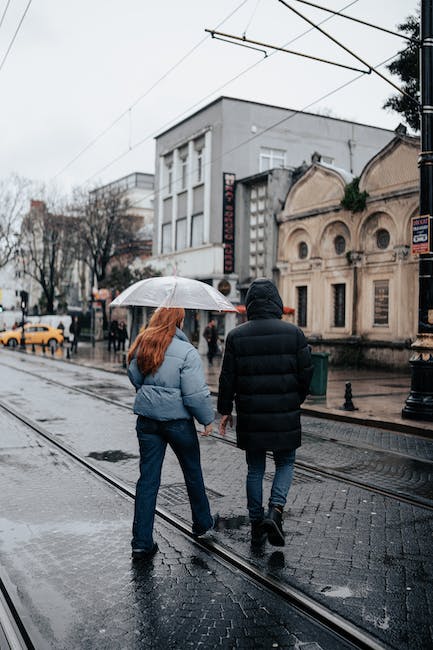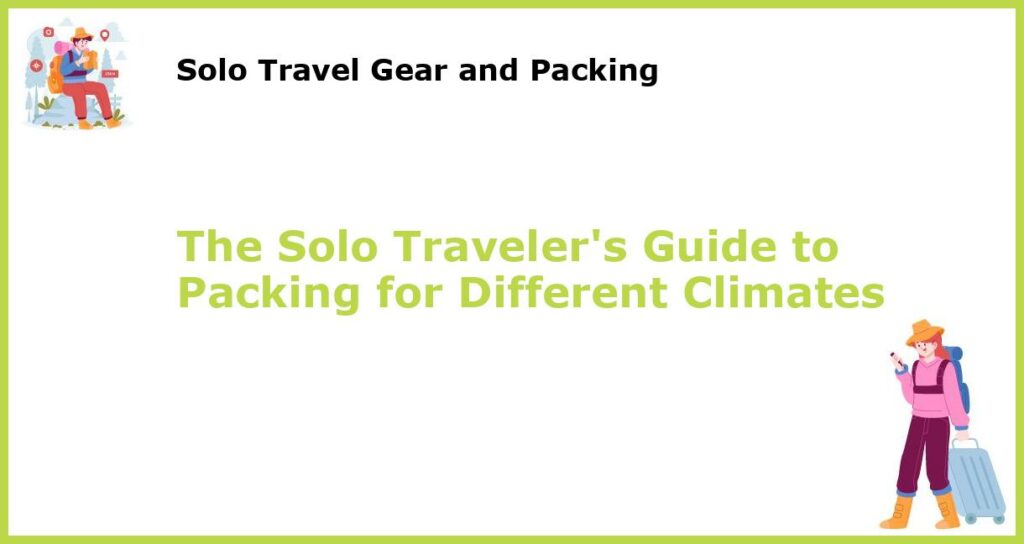Traveling solo can be an exciting and liberating experience. It allows you to explore different destinations on your terms and experience different cultures, cuisines and people. However, packing for different climates can be a daunting task. The type of clothing that may be suitable for your tropical destination may not be ideal for a colder region. To make your solo travel experience more enjoyable and comfortable, we have compiled a guide to packing for different climates.
1. Know the climate

Before you start packing, research the climate of your destination. It is essential to know the average temperature, humidity and rainfall to determine the type of clothing that you need. While packing for a tropical destination, you may pack light clothes and comfortable shoes, while packing for colder climates may require warm clothes, boots, scarves and gloves.
Moreover, knowing whether you are traveling during the monsoon season or dry season also helps. You can pack a raincoat or foldable umbrella in case of unexpected rain without adding bulk to your luggage.
2. Make a packing list

Making a packing list before your trip is crucial as it ensures that you don’t forget essential items. It keeps your suitcase organized and makes packing less stressful. Categorize your packing list according to clothing, electronics, and toiletries. Choose the essentials and pack items depending on the duration of your trip. You don’t want to pack items that you won’t use or have limited use, leaving no space for other necessary items.
3. Choose versatile clothing

When packing for different climates, versatility is key. It would be best if you packed clothing that you can wear in different temperatures, protecting you from extreme heat or bitter cold. Lightweight clothing like jeans, t-shirts, and light jackets work well in both warm and cold climates, making them perfect. Choose clothing items that can be mixed and matched easily to create different outfits.
Additionally, do not pack heavy clothing, such as bulky or winter coats, as they take up too much space in your suitcase. Instead, layering lighter clothing can be more effective, and you can add or remove layers as needed.
4. Pack for the worst-case scenario

Always pack for the worst-case scenario- one of the golden rules of packing. Depending on the destination, you may experience an unexpected change in climate or have to deal with weather patterns such as rain or snowfall. In such instances, packing a rain jacket or umbrella, extra clothing, and warm jackets is advisable. Ensure that you have appropriate footwear as well, especially if you plan to hike or walk in wet or cold conditions.
5. Consider the culture

It’s vital to consider the culture of your travel destination when packing. Some countries have conservative dress codes that require modest clothing, covering shoulders and legs. Failure to oblige may attract unwanted attention, disrespect, and even punishment. Research on the destination’s culture practices and dress codes to avoid packing any inappropriate clothing items.
6. Pack light

Whether you are traveling for two days or two months, packing light is a tried and tested travel hack. Lighter luggage is easier to carry around and gives you the freedom and flexibility to move between destinations without worrying about excess baggage fees. Avoid packing heavy items such as books, laptops, and unnecessary electronics. You can utilize digital copies of books or documents and pack essential electronics such as smartphones, chargers, and cameras.
7. Don’t forget the essentials

While packing for different climates, it’s important to remember the essentials. Sunscreen, insect repellent and medication items are the mainstay of essential items. Do not assume that your destination will have stores that sell your preferred brands or products. Pack these items to avoid any inconvenience, especially if you have allergies or certain medical conditions. Additionally, bring a universal adapter and a portable charger for your electronics- you never know when you’ll need them.
8. Utilize packing cubes

Another efficient way of organizing and packing for different climates is by using packing cubes. These cubes help to keep your luggage organized, maximize the available space, prevent wrinkles and make it easier to locate items. You can categorize your packing cubes according to clothing type or occasion. For instance, pack one cube for nightwear or outdoor activities and another for formal events. Utilizing packing cubes also makes repacking a breeze.
9. Bring a backpack

Bringing a backpack is a great idea when packing for different climates. It is much easier to carry than a suitcase, and it gives you more flexibility when exploring your travel destination. A backpack can also act as your daypack, allowing you to store your water bottle, sunscreen and other essential items, and giving you more room when out and about. Furthermore, it can help distribute the weight evenly, making it comfortable to carry for extended periods.
10. Be flexible

Lastly, remember to be flexible. No matter how well you pack, unexpected things can happen when traveling. Be open within the cultural boundaries, and be prepared to adapt to any changes in the climate or culture of your travel destination. With a little spontaneity and a positive attitude, it’s possible to make the most of your trip, even if it does not go as planned. A change in plans often leads to creating new and unforgettable experiences that you may have missed if you stuck to a rigid itinerary.








 You might also be interested in those articles related to solo traveling
You might also be interested in those articles related to solo traveling